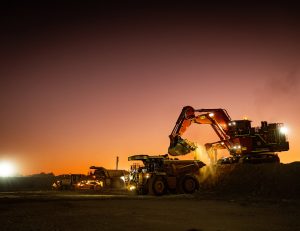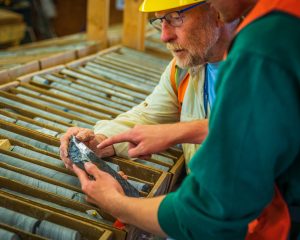It’s all about the timing so the announcement by St George Mining (ASX: SGQ) yesterday of the latest round of high-grade assay results from its Mt Alexander nickel project was nicely played.
The nickel world’s eyes will be on Perth next Tuesday for the annual Paydirt Australian Nickel Conference to hear about where all these new supplies of nickel sulphides, so sought after by the EV market’s battery makers, are going to be found.
For all the excitement about nickel’s – particularly nickel sulphide’s – role in the new-age battery world, there is precious little greenfields exploration under way, and as a result hardly any new mines on the development blocks.
This is great news for existing producers, who are bending over backwards to increase production and pursue brownfields exploration and expansion options.
With the exception of the resurgent BHP Nickel West unit, which has a strong pipeline of new resource developments in Western Australia’s northern Goldfields including Venus and Leinster B11, it is difficult to pinpoint the next economic nickel sulphide deposit that will come on stream.
It is a gap in the market that St George hopes to fill with its Mt Alexander project, once owned by BHP and located west of Leonora – and south of BHP’s Leinster-Mt Keith nickel complex.
St George has been busy drilling out three discoveries at Mt Alexander – the Investigators, Stricklands and Cathedrals deposits – that lie within a 4.5km strike of the Cathedrals Belt.
What St George has discovered are intercepts of massive nickel-copper sulphides. What remains to be confirmed is how large this emerging and potential significant nickel discovery is.
Yesterday, St George announced the assay results from its latest diamond hole, MAD112 at the Investigators prospect, had returned 3.55m of 4.67% nickel, 2.27% copper, 0.2% cobalt and 2.94gpt of platinum group elements (PGE).
“Our methodical exploration strategy at Investigators, using drilling and DHEM surveys concurrently to identify potential extensions of massive nickel-copper sulphides, is delivering excellent results,” St George executive chairman John Prineas said.
Drilling is continuing as St George tries to piece together, hole by hole, the size of each of the three prospects.
Nickel is certainly there to be found but it is the continuity that is yet to be confirmed.
Ever since St George announced the assays from a hole at Stricklands a year ago – the hole MAD71 returned 17.45m at 3.01% nickel, 1.31% copper, 0.13% cobalt and 1.68gpt PGE, including 5.3m at 4.39% nickel, 1.45% copper, 0.21% cobalt and 2.09gpt PGE – the market has compared subsequent assays to the MAD71 bonanza.
And notwithstanding a consistence of high-grade results and massive sulphides that add to the overall picture of nickel mineralisation at Mt Alexander, St George has struggled to receive the same aplomb as it did with MAD71 a year ago.
Having become a victim of its own success, St George has been busy explaining to markets across the world the value it is discovering at Mt Alexander – Mr Prineas’ presentation at the Nickel Conference on Tuesday comes after he attended LME Week in London a fortnight ago.
It is worth noting that Mr Prineas will be the first – and most advanced – of the explorers to present on Tuesday, following on from an opening session comprising representatives from BHP Nickel West (industry leader), Western Areas (mid-tier leader), Panoramic Resources (restarting Savannah mine), Poseidon Nickel (trying to restart a collection of old nickel mines) and Black Mountain Metals (private equity-backed newcomer to WA which acquired Panoramic’s mothballed Lanfranchi operation).
Industry commentators are united in their view that the EV revolution will require a substantial uptock in nickel sulphide production.
This is not yet reflected in a London Metal Exchange-quoted cash nickel price of $US12,140 per tonne.



